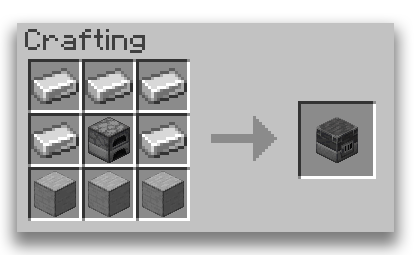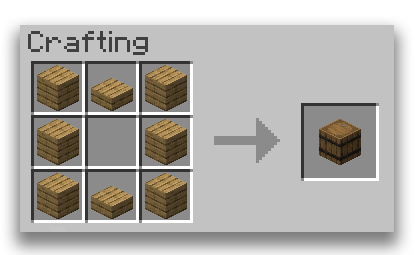There are so many features of Minecraft that make it popular among everyone. Minecraft is a sandbox game with so much to explore and create. It keeps its players engaged with various activities, limitless objectives, and challenges. This post’s focus is to discuss another important feature of Minecraft, which is the villager’s Job block.
Before talking about villagers, let’s discuss villages. Villages are spawned randomly anywhere in your world, whether they are plains, deserts, or snowy lands. The appearance of the villagers represents the biome they spawn in. Villagers are harmless people. In Minecraft’s jargon, they are passive mobs and do not even attack upon provoking. The main job of villagers is to work at their professions, reproduce and interact.
The currency is emeralds, which can be used for trade in the village. Well, you cannot trade with every villager; you can trade with employed villagers only. You will find many unemployed villagers whose appearance can distinguish. Unemployed villagers actively seek for job site block, which is free and not claimed by another villager.
You can also give villagers the job; all you need is a bed, a villager, and a job block to craft items. Trading with villagers provides experience to you and the villagers, which will eventually level them up. Let’s discuss all the villager’s jobs in Minecraft:
How many villager jobs in Minecraft:
In Minecraft, there are 13 jobs that can be assigned to any unemployed villager. An unemployed villager seeks employment in a radius of 48 blocks, and whenever the villager gets the job block, he emits green particles. Let’s see the list of all job blocks:
1 Grindstone:
This job site block is for the weaponsmith profession. Grindstones are used to repair items and tools. You can craft Grindstone using 2 sticks, 1 stone slab, and two wood planks in a 3×3 crafting grid. Weaponsmith sells swords, axes, iron, and even diamonds.

2 Smithing Table:
For toolsmith, there is a smithing table. Toolsmiths offer tools of varying quality. These blocks can generate naturally inside the toolsmith house. But it can also be created using 2 iron ingots, 4 wood planks.

3 Loom:
Looms are also one of those blocks that can be generated naturally in Shepherd’s house. Shepherd offers different colors of wool and painting. To craft a loom, use 2 string, 2 wood planks and place them in a 3×3 grid as shown in the image below:

4 Stonecutter:
Stonecutter block is for Mason’s profession. Stonecutter cuts stones and bricks. To assign a stonecutter to any unemployed, you need to craft it using 1 iron ingot and 3 stones. Shadow the pattern given in the image below:

5 Lectern:
Lectern one of the key job block for the Librarian profession, which offers enchanted books. Lectern usually found in village library but can be crafted using 1 bookshelf and 4 wooden slabs of any kind in a 3×3 grid.

6 Blast Furnace:
This job block is for Armorers and used to smelt mineral blocks or ores. To craft a blast furnace, you need 4 iron ingots, 1 furnace, and 3 smooth stones in a 3×3 grid. The smelting time will be double compared to a regular furnace

7 Smoker:
The smoker is used for smelting food items and offering emeralds and cooked meat. This job block is for the butcher. To craft a smoker, you need one furnace and four wood logs or stripped log as depicted in the image below:

8 Brewing Stand:
Brewing stands are used by clerics who offer magical items. Moreover, it offers brewing potions, lingering potions splash potions. Brewing stands are naturally generated in ships, igloos, and churches. Brewing stand can be made with the help of 1 blaze rod and 3 cobblestones.

9 Cartography Table:
As the name is suggesting that this job block is for cartographers and offers maps and banner patterns. It is also used to zoom out maps and is naturally found in the cartographer’s house. To make a cartographer table, you need 2 paper and 4 wood planks in a 3×3 grid as shown below:

10 Composter:
Farmers use the composter, and it makes a bone meal using plant and food material. Composters are also found in farms, and to make it in a 3×3 grid, you need 7 wood slabs.

11 Barrel:
Barrel job block is for fishers that offer fish and is mainly used to store items. They naturally generate in fisherman’s cottage. Barrels can be moved using water, lava, or pistons. To make a barrel, you need six wooden planks and two any wood slabs:

12 Cauldron:
The cauldron job block is for leatherworkers. The cauldron can be mined using a pickaxe and naturally generated in swamps. It is used to make leather armor, house armor. Seven iron ingots are needed to craft cauldron, place them in a 3×3 grid as shown in the image below:

13 Fletching Table:
The fletching table block is for flashers, and it offers bows, arrows, flints. To craft a fletching table, you need two flints, two flints, and four wood planks.

What are Nitwits:
Nitwits offer nothing; they are the most useless villagers. You cannot assign any job to them; they are the village villagers without any purpose.

Trading:
Minecraft has an amazing supply and demand concept that means if you buy a specific item too many times, the stocks will reduce, which ultimately increases the price. Similarly, if an item does not trade, the price of that item will go down. Another important aspect is popularity; you have varying popularity levels with corresponding outcomes. Hurting any villager will make your popularity drop, and the price of items will increase. However, positive action will reduce the prices, for instance, saving villagers from villagers or curing the zombie villager.
Conclusion
Minecraft has limitless possibilities, and that’s what keeping its audience engaged. In this post, we discussed job blocks for villagers. Villagers play a vital role in the Minecraft gameplay experience; you can trade with them by employing them and giving them jobs using different job blocks. The villagers fill the stock twice a day, and the price goes up if you trade one item a lot, and similarly, the price goes down for unsold stock.
from Linux Hint https://ift.tt/3eAFDHz




0 Comments